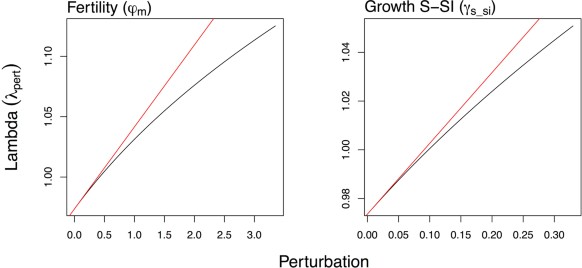
Abstract: "Rare species across taxonomic groups and biomes commonly suffer from multiple threats and require intensive restoration, including population reintroduction and threat control. Following reintroduction, it is necessary to identify what level of threat control is needed for species to persist over time. Population reintroduction and threat control are time intensive and costly. Thus, it is pragmatic to develop economically efficient restoration strategies. We combined transfer function analysis and economic cost analysis to evaluate the effects of biologically meaningful increases in demographic processes on the persistence of a reintroduced population of a Hawaii endemic long-lived shrub, Delissea waianaeensis. We show that an increase in fertility by 0.419 following the suppression of non-native rodents or an increase by 0.098 in seedling growth following the suppression of invasive molluscs would stabilize the population (i.e., λ = 1). Though a greater increase in fertility than seedling growth was needed for the reintroduced population to persist over time, increasing fertility by suppressing rodents was the most cost effective restoration strategy. Our study emphasizes the importance of considering the effects of large increases in plant vital rates in population projections and incorporating the economic cost of management actions in demographic models when developing restoration plans for endangered species."
Read More: https://www.nature.com/articles/s41598-018-20178-7
No comments:
Post a Comment